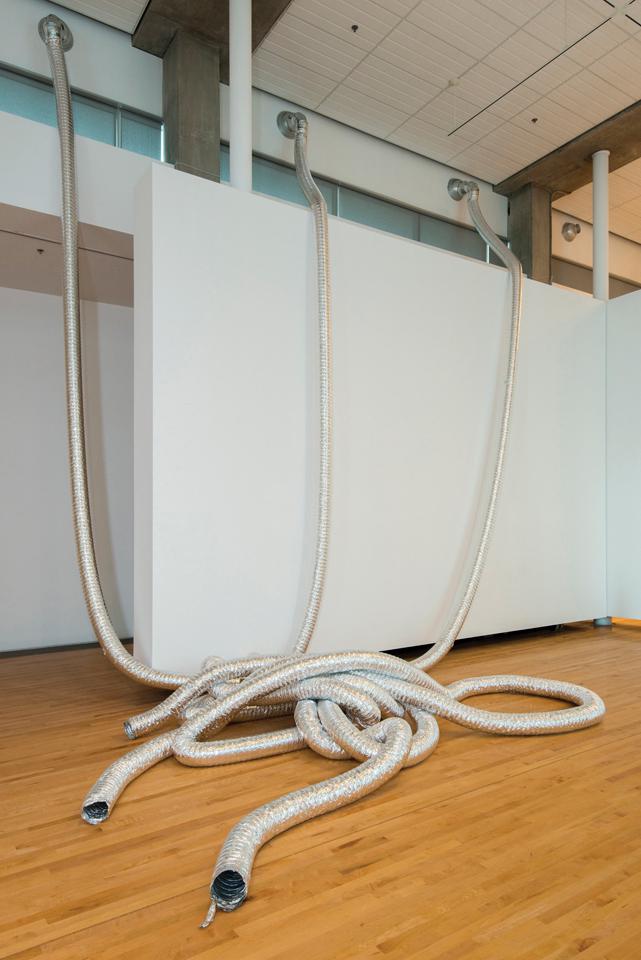As you approach Kamloops from the south and west, you see gross evidence of the mountain pine-beetle epidemic. Near the highway, most of the dead trees have been cut down and trucked away, leaving behind rude tracts of devastation. Even the new growth reveals infestation: rust-coloured needles among the young, futile greenery. These unhappy images replayed in my head when I arrived at the Kamloops Art Gallery and encountered Germaine Koh’s solo show “Weather Systems.” They especially rewound through her Accord of Wood (2013–ongoing), an installation that, in its first incarnation, consists of rough pine logs neatly stacked against an interior wall and equalling, in volume, one cord (3.9 cubic metres). With its blue streaks and stains, the wood is immediately recognizable as pine-beetle kill. Less obvious are the work’s accompanying documents and professional correspondence concerning if and how unrefined logs might be introduced into an environmentally controlled museum setting. The rapid spread of the mountain pine beetle, owing to industrial forest management practices and global warming, and the massive impact on both the natural and economic environments—these issues seem to reside in the work as dire and timely subtext.
Koh’s art—which is usually not quite so bleak—reveals both an analytical intelligence and a lively imagination. In wholly unexpected ways, it renegotiates our understanding of the quotidian, from the natural phenomena that are beyond our control to our daily activities and social interactions. A footpath is blocked by a post; word processing is translated into Morse code smoke signals; tiny ball bearings rain from the ceiling. “I would describe my work as an attempt to pay attention to overlooked, everyday processes that incrementally shape our lives,” Koh has told me. She is adept at finding “residual” meaning in these processes, usually by establishing lines of connection, mediation or causality. Where her early practice was often low-tech and process-based, her recent art employs a sophisticated array of computer technologies, electronic communications and architectural interventions.
The show surveyed one and a half decades of Koh’s career, with a focus on her Fair-weather forces series (2002–08), whose individual works translate outdoor conditions—sunlight, wind speed or seafront water levels—into mechanical or electrical actions within the gallery. As well, viewers were introduced to four new pieces, three of them site-specific. One of them, Guts (2013) is a playful reconfiguring of the gallery’s air-conditioning system that attached absurd lengths of shiny metal ducting to ceiling-height vents. At floor level, the impression was of oversize tangles of shiny metallic viscera, whose open ends blew cold air. As well as analogizing the building to the human body, Guts subverted the gallery’s climate-control system, framing a dialogue about the strangely privileged environment in which art is ordinarily exhibited.
This is a review from the Fall 2013 issue of Canadian Art. To read more from this issue, please visit its table of contents.









